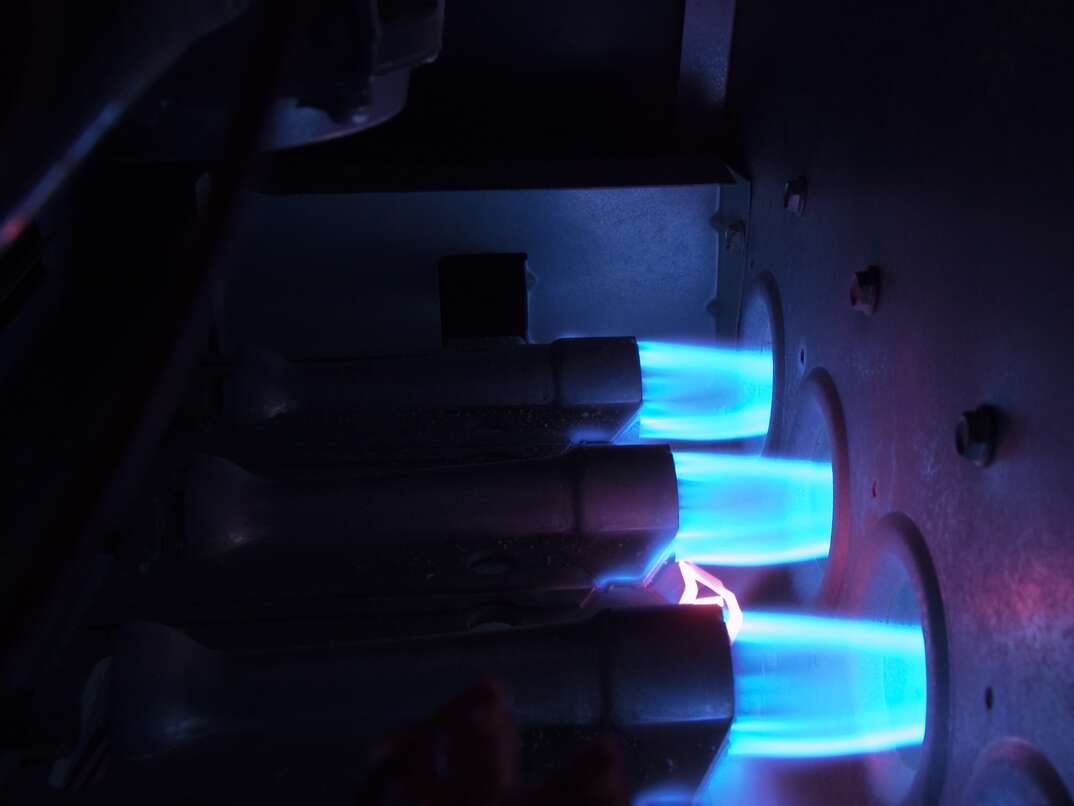Pilot Light Out? Here's How to Relight It

Having your furnace malfunction in the middle of winter is as frustrating as it is common. After all, it’s during the cold winter months that your furnace is working its hardest, so this is when it’s most likely to experience issues. Fortunately, a furnace that spontaneously stops working is usually caused by something as easily remedied as a pilot light that blew out.
The pilot light is a small flame that remains continuously lit in order to activate the furnace’s main burners, and it can go out for a variety of reasons. The good news is that relighting this pilot light is often a simple matter that can be performed by virtually anyone. So before you dish out the money to hire a professional to get your furnace back up and running, read on to learn how to light a furnace pilot light in four easy steps. All you’ll need is a barbecue lighter or a long match.
How to Light a Furnace Pilot Light
1. Read the Instructions
Although the process for lighting a pilot light is fairly universal, the specific procedure can vary slightly between manufacturers and models. That being the case, it’s always best to refer to the furnace’s user manual instead of relying on any generic instructions. If you’ve lost or misplaced your user manual, there is usually a label located somewhere on the furnace with instructions on how to relight the pilot.
2. Find the Gas Valve
The furnace’s main burners are usually operated by a gas valve that looks like a round knob with three settings: “On,” “Off” and “Pilot.”
In some cases, the gas valve may also have a separate reset button next to the knob that’s responsible for supplying gas to the pilot while it’s being pressed. If there isn’t a reset button, you typically need to depress the knob while it’s on the “Pilot” setting to supply gas to the pilot light.
Once you’ve located the gas valve, turn the knob to the “Off” setting and wait a few minutes for the gas to dissipate from the system. Doing so will ensure that excessive gas won’t cause an especially large flame when you attempt to relight the pilot, which is particularly important for preventing burns to your hand or fingers if you need to manually relight the pilot.
3. Relight the Pilot
Follow the small metal tube connected to the gas valve until you find the pilot light assembly. The pilot light will usually be a small L-shaped tube that sits directly next to a slim metal rod called the thermocouple.
Turn the knob to the “Pilot” setting, then depress either the knob or the reset button to engage the gas supply to the pilot. Some furnaces will have an integrated spark igniter that will automatically light the pilot, while others will require you to manually light it by holding a flame directly over the pilot light.
If you need to use a separate flame, simultaneously hold the flame from a barbeque lighter or long match over the pilot while you depress the knob or button until it ignites.
In both cases, continue depressing the knob or reset button for about 30 seconds after the pilot light has ignited to ensure that it will stay lit.
4. Turn the Furnace Back On
With the pilot light lit, turn the dial on the gas valve to the “On” position, which should cause the main burners to ignite. Additionally, monitor the temperature on the thermostat connected to your furnace to verify that the temperature incrementally increases in your home. Finally, sit back and enjoy a warm and toasty home once again.
The pilot light can go out for a number of reasons, including:
- Dirty pilot light. Dirt or debris can accumulate on the pilot light over time, making it more prone to going out. You can usually tell that dirt is to blame by observing the pilot light once it’s lit. If it’s weak and flickering, or the base of the flame is red or yellow instead of a hot blue one.
- Drafts and airflow. Even the slightest breeze can blow a pilot light out. If there’s excessive drafting in the room where your furnace is located, consider hiring a professional to seal any airflow issues that may be to blame.
- Bad thermocouple. The thermocouple is the metal rod that’s located directly next to the pilot light. It acts as a safety mechanism by shutting off the gas supply if it detects the pilot light is out. Thermocouples naturally fail over time, so a replacement will often solve the problem.
If you find yourself having to constantly relight the pilot — or if you can’t get it to light at all — try to determine whether one of these underlying issues could be to blame. You may be able to address some of these yourself, while others may require the assistance of a professional HVAC technician.
Elocal Editorial Content is for educational and entertainment purposes only. Editorial Content should not be used as a substitute for advice from a licensed professional in your state reviewing your issue. Systems, equipment, issues and circumstances vary. Follow the manufacturer's safety precautions. The opinions, beliefs and viewpoints expressed by the eLocal Editorial Team and other third-party content providers do not necessarily reflect the opinions, beliefs and viewpoints of eLocal or its affiliate companies. Use of the Blog is subject to the
Website Terms and Conditions.The eLocal Editorial Team operates independently of eLocal USA's marketing and sales decisions.



